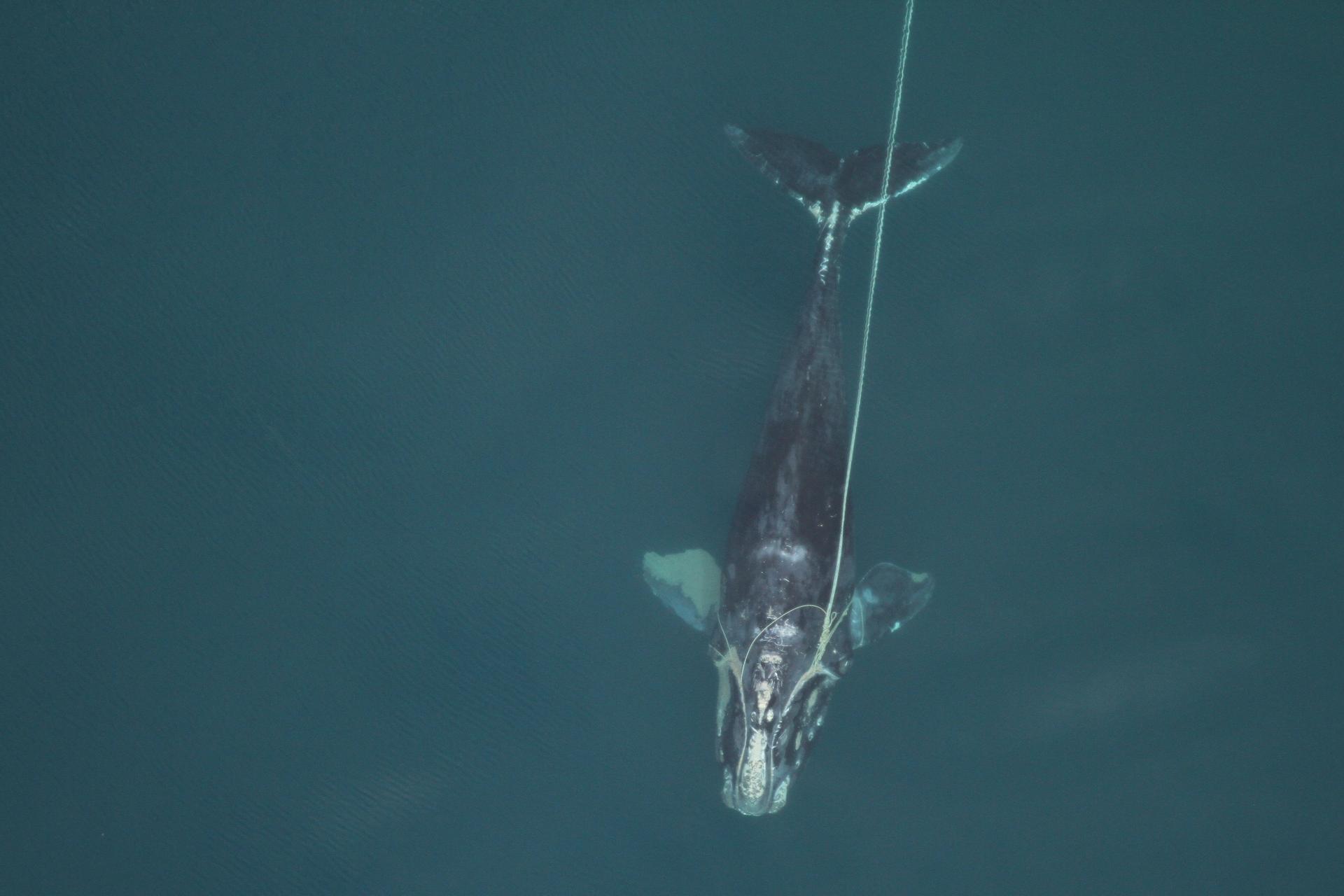North Atlantic right whales are shrinking in size as they struggle to survive environmental havoc
For decades, scientists have sounded the alarm about the rapidly declining population of North Atlantic right whales. With fewer than 400 remaining, the right whale is one of the most endangered cetaceans on the planet.
Climate change, vessel strikes and entanglements in fishing lines all pose a threat to the whales’ survival. And now researchers have identified a new one: The whales, on average, are actually shrinking in size.
Typically, North Atlantic right whales should weigh roughly 140,000 pounds and be up to 52 feet long. The new study finds that young North Atlantic right whales are not growing to their full potential — which could be leading to fewer successful births.
This year, scientists say, 19 living Northern Atlantic right whale calves were born, which is more than the past three years combined, but still less than a third of the historical average annual birth rate.
Related: Little time left to save the North Atlantic right whale
Amy Knowlton, a senior scientist at the New England Aquarium and a co-author of the study, says the average reduction in length the researchers discovered is about three feet, once the whales have reached their full length — 3 feet shorter than in studies done in the 1980s and 1990s. “That’s a pretty dramatic reduction in size,” Knowlton says.
The concern, Knowlton explains, is that smaller whales won’t have the healthy blubber reserves of a larger whale, which could make them less resilient to the impacts of climate change, for example. Also, reproductive females use much of their blubber to support a calf, which they nurse for at least a year. If females are already living with a diminished blubber capacity and then lose that blubber giving birth and lactating, they will likely take longer to recover and to build up the necessary reserves to have another calf, Knowlton says.
“We’ve probably lost some ability for these females to be really productive females in the species in this population. It’s a concern that needs to be considered as we try and keep the species from going extinct.”
“We’ve probably lost some ability for these females to be really productive females in the species in this population,” she notes. “It’s a concern that needs to be considered as we try and keep the species from going extinct.”
There is some indication that entanglements with fishing lines are primarily to blame for the whales’ reduction in size, Knowlton says. “The entanglement part…was the strongest signal when everything else was compared,” she notes. “There’s a lot of lobster gear, crab gear and gill net gear, especially up here off the coast of New England.”
Related: Endangered right whales have moved because of climate change — into dangerous waters
Right whales are filter feeders, so they move through the water with their mouths open. That’s where entanglements typically begin — in the mouth.
When a whale hits a rope, it will start flailing to try to dislodge it, which often gets the whale all wrapped up in the rope she says. If the whale can’t break free from the bottom gear to which the rope is attached, it could drown. If it does eventually break free it will then be trailing a lot of rope behind it, which will drain the whale’s energy and its ability to feed well.
“We’ve shown that over 85% of the [right whale] population has endured at least one entanglement and close to 60% of the population has endured two or more entanglements.”
“We’ve shown that over 85% of the population has endured at least one entanglement and close to 60% of the population has endured two or more entanglements,” Knowlton says.
Right whales are resilient and scientists have seen them adapt to stressors in their environment, such as food limitation and climate change, “but the entanglement threat and the vessel strikes that occur…are things that we could control much better than we’ve been doing,” Knowlton says.
“It is a very frustrating situation to see,” she adds. “The entanglement threat has been there for decades, and it’s certainly been exacerbated, partly because of climate change. But also, ropes have become much stronger in recent decades. Ideally, ropeless fishing gear would be the ultimate solution to this, and there’s been a tremendous amount of progress on that front.”
There’s some concern from fishermen about the cost and whether ropeless gear can be used effectively, Knowlton says, but some fishermen are definitely willing to engage and test the gear and try and make it work.
“Fishermen don’t want to see whales die in their gear,” she notes. “You have to work with them to figure out the quirks and sort out the changes that would improve that gear, and that’s been what’s been happening the past few years, and it’s really encouraging to see that.”
This article is by Adam Wernick based on an interview that aired on Living on Earth from PRX.
